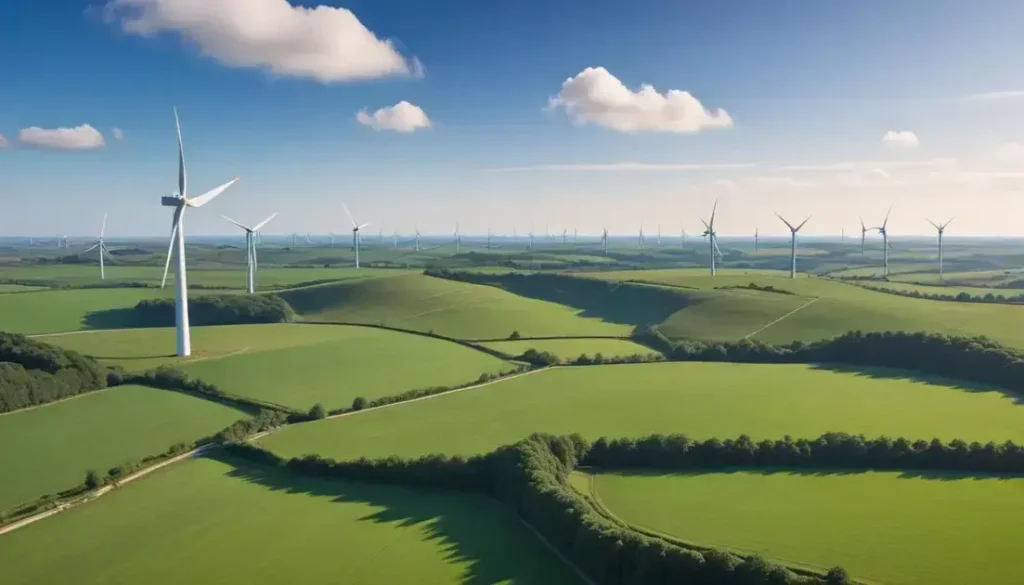Carbon removal through technologies like Direct Air Capture is essential for combating climate change, as it effectively releases CO2 from the atmosphere and supports sustainability efforts by businesses like JPMorganChase.
The recent agreement between JPMorganChase and 1PointFive highlights the growing importance of carbon removal initiatives in today’s business landscape. How are companies adapting?
JPMorganChase’s commitment to carbon removal
JPMorganChase’s recent commitment to carbon removal represents a strategic move towards sustainability. This initiative not only aligns with the increasing demand for responsible business practices but also showcases the firm’s dedication to addressing climate change. By investing in technologies that focus on capturing CO2 from the atmosphere, JPMorganChase aims to reduce its overall carbon footprint.
A key aspect of this commitment is the partnership with 1PointFive, a company focused on Direct Air Capture (DAC) technology. This innovative approach involves removing carbon dioxide directly from the air, providing a potentially scalable solution to mitigate greenhouse gas emissions. The collaboration is expected to pave the way for advancements in carbon management, creating synergies that may benefit various industries.
In addition to enhancing its sustainability credentials, JPMorganChase’s actions reflect a broader trend among financial institutions recognising the importance of environmental responsibility. With stakeholders increasingly factoring in environmental, social, and governance (ESG) criteria, this initiative positions the bank as a leader in the transition to a sustainable economy. By prioritising carbon removal, the bank is not only addressing regulatory challenges but also responding to the needs of a more environmentally conscious clientele.
The future of Direct Air Capture technology
The future of Direct Air Capture (DAC) technology appears promising, offering innovative solutions to combat climate change. As companies and governments commit to reducing greenhouse gas emissions, DAC is emerging as a vital tool in the fight against global warming. This technology works by extracting carbon dioxide directly from the atmosphere and can potentially scale to meet the increasing demand for carbon removal.
Recent advancements in DAC technology are making it more efficient and cost-effective. Companies are investing heavily in research and development to enhance the capture rates and reduce operational costs. This progress is crucial as it aligns with global climate goals, pushing for net-zero emissions by mid-century.
Moreover, the integration of DAC with renewable energy sources further adds to its viability. Utilizing clean energy in the capture process minimizes additional carbon emissions and enhances the overall sustainability of operations. Collaborations between tech firms and environmental organisations are key in this domain, enabling shared expertise and resources.
As awareness of climate issues grows, regulatory frameworks are increasingly supporting DAC projects. Governments are providing financial incentives and grants to accelerate the adoption of this technology. Ultimately, the future of Direct Air Capture technology will play a significant role in shaping a sustainable and environmentally responsible global economy.
In conclusion, the promise of carbon removal
The push for carbon removal, especially through technologies like Direct Air Capture, is becoming increasingly vital in our battle against climate change. Companies like JPMorganChase are leading the way by investing in innovative solutions that help reduce greenhouse gas emissions.
As awareness about sustainability grows, the future of Direct Air Capture looks bright. These technologies are not just about capturing carbon; they represent a shift towards a greener economy that values environmental responsibility.
By embracing these advancements, businesses can contribute to a healthier planet while also gaining a competitive edge. The integration of DAC with renewable energy further enhances its potential, making it an essential part of our journey towards a sustainable future.
Frequently Asked Questions
What is Direct Air Capture (DAC)?
Direct Air Capture (DAC) is a technology that removes carbon dioxide directly from the atmosphere, helping to reduce greenhouse gas emissions.
How does JPMorganChase support carbon removal initiatives?
JPMorganChase is investing in Direct Air Capture technology through partnerships, aiming to enhance sustainability and address climate change in its operations.
What are the benefits of carbon removal technologies?
Carbon removal technologies help mitigate climate change by reducing atmospheric CO2 levels, contributing to a sustainable future for businesses and the planet.
Can Direct Air Capture be integrated with renewable energy sources?
Yes, integrating DAC with renewable energy enhances its sustainability and efficiency, helping to minimise additional carbon emissions during the capture process.
Why is carbon removal important for businesses?
Carbon removal is crucial for businesses as it demonstrates commitment to environmental responsibility, meets regulatory standards, and appeals to eco-conscious customers.
What does the future hold for Direct Air Capture technology?
The future of DAC technology is promising, with ongoing innovations making it more effective and cost-efficient, positioning it as a vital solution in the fight against climate change.


